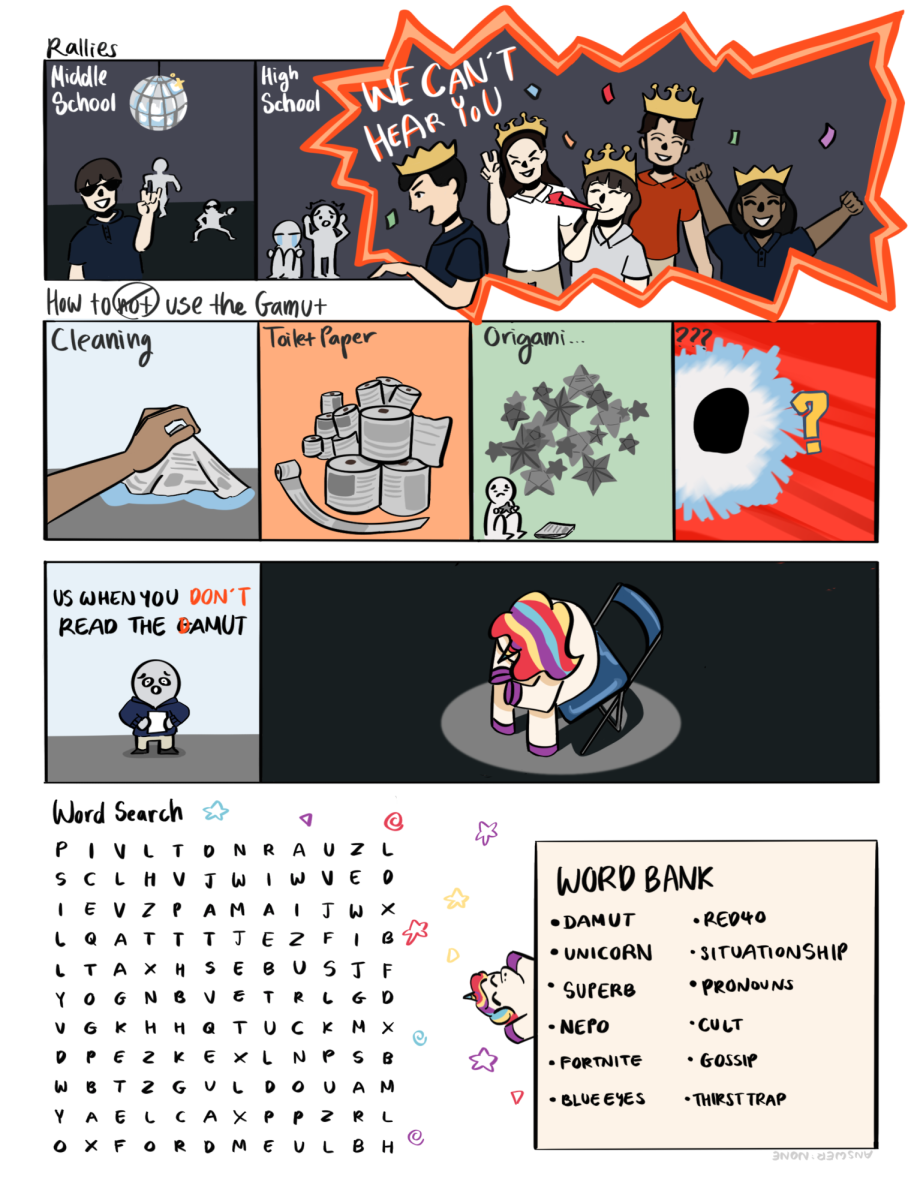Stacking onto a widely revered three album run, Tyler, the Creator dropped his seventh studio album Chromakopia on Oct. 28, tapping into new facets of his creativity and marking a new arc in his music. In a drift from Tyler’s exaggerated characters and musical personas, Chromakopia survives as a standalone record navigating the candor of his struggles beneath eccentric composition.
As a result, the album is less a landmark of groundbreaking music and instead a thoughtful narrative complemented by Tyler’s unique, unflinching artistry, finding strength in his artistic and personal maturation.
In the music video for grand opening track “St. Chroma,” Tyler leads a marching troop into a shipping container and explodes the cargo in a burst of vibrant technicolor. A fitting glimpse into Chromakopia’s vivid disposition, the visual contrast reflects the album’s balance between distorted rock influences and colorful experimentation.
Chromakopia’s rap tracks in particular carry a similar roughness to past works yet sing of development, venturing beyond Tyler’s typical style. “Thought I Was Dead” teeters on a West Coast, Kendrick Lamar-inspired flow, toying with laidback pace over hectic, clanging instrumental. Meanwhile, choral rap-hymn “Noid” samples Zambian rock for its chorus and spins Tyler’s aggressive, adrenalized flow into a terse confessional on celebrity paranoia.
Even “standard” songs like “Rah Tah Tah” elevate Tyler’s rap discography. Abrasively upbeat percussion and synths throwback to the Cherry Bomb era but with an experimentally eerie, disorienting feel. Although admittedly Tyler shows little growth in his lyricism, droning on his usual laments of fame and conceited boasts, the deceivingly complex production behind each song joined with compelling delivery distracts from lackluster songwriting.
Meanwhile, the album leans into a bright, egregious palette with a cartoonish and borderline theatrical composition. The raucous “Sticky” features boisterous punches from GloRilla, Sexyy Red, and Lil Wayne, though only for a few short verses. Tyler ties the unruly track together through his own merits: bodied production reminiscent of a packed cafeteria or bustling stadium embellish “Sticky’s” rowdy anthemic energy, and provocative raps add a biting edge that blends with the tracklist while still being infectiously brassy.
By contrast, “Balloon” allows its feature, Doechii, to own the song herself. She matches Tyler’s chaotic verses with witty, tongue-in-cheek rap atop a ridiculous beat born from a counterintuitive merge between a “Mario Kart”-esque J-pop sample and Luke’s “I Wanna Rock.” As Tyler and Doechii spit brash, candidly casual verses that ground “Balloon” in informal banter, Tyler engages with silliness at its most overt, crowning Chromakopia with the distinctive whimsicality that often surfaces in his art.
Beneath Tyler’s offbeat production and garage rock odes is what seems to be a raw, newly vulnerable self-exploration in lieu of offensively bizarre characters. However, his attempts at dissolving the walls of his celebrity persona are shallow, although frank.
Nail-on-the-head “Take Your Mask Off” with Daniel Caesar points out the glaring obvious: Tyler is still critical of himself despite the image he puts forth. Despite gorgeous lo-fi piano backings and majestic choral arrangements, the track goes unnoticeable as it retreads the typical woes of celebrity images. Similarly, tracks “Hey Jane” and “Judge Judy” are forgettable slow-tempo beats that forge a somewhat sincere, plaintive narrative about love and reckless commitment, but fall off the radar for perhaps overly straightforward lyricism. The only truly personal song presented on the album is “Like Him” featuring Lola Young, an introspective, devastating ballad-adjacent hip-hop track that embodies grief and confusion.
Tyler grapples with the uncomfortable as he divulges newfound perspectives on his absent father— compared to previous projects, “Like Him” wistfully ponders what Tyler’s life could have been, as if looking into a mirror and picking apart at a physical and mental image. Grandiose production, layered with Young’s child-like crooning, funky guitar loops, and nostalgic synths, evokes a sense of spiraling as Tyler rethinks everything he’s ever known. As he questions how much he is governed by a man who’s been estranged his whole life, Tyler exposes emotional wounds as he faces turbulent uncertainty in his life and distraught over his identity.
Chromakopia, though not a personal diary entry as anticipated, indulges in both robust rap-hip hop gloats and absurd, energetic anthems. In a unique rhapsody of his artistry, Tyler pores his consistently refreshing production talents into a record that flaunts growth, versatility, and artistic evolution.






























































